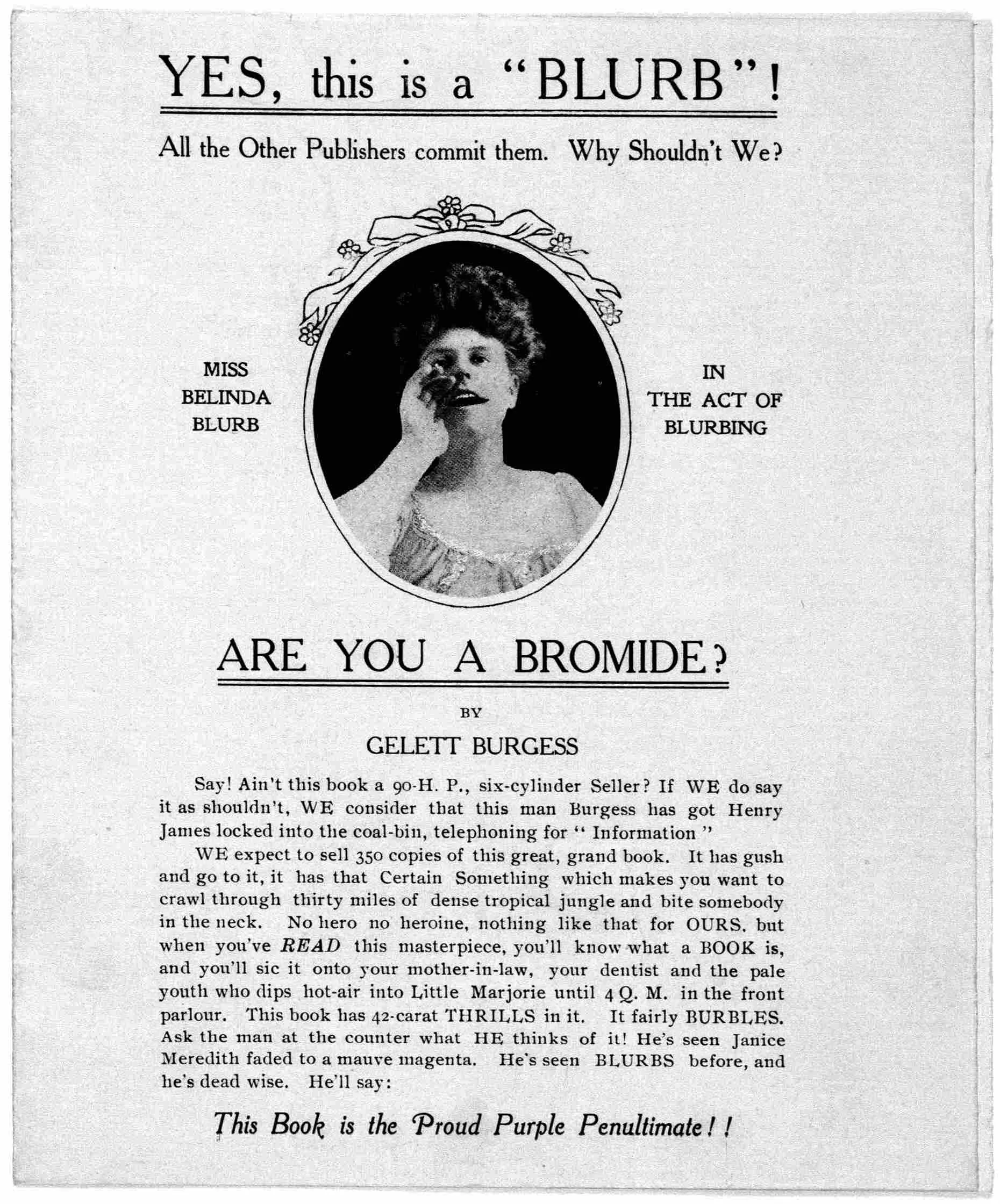Written by Nikki DeMarco Jul 28, 2021 .. it’s the best thing we’ve read all week at HOB..as a fan of Leaves of Grass we had no idea it was the first ever book Blurb.. fascinating stuff

It’s cliche, but books are judged by their covers. For one thing, often the cover lets the reader know what kind of book they are buying. White woman in a gown or a shirtless muscle-bound man: romance. Bright cartoon picture superimposed with san serif: young adult. Dark with silhouetted figure in the mist: mystery. Dripping font titles: probably horror. So, let’s say you’re a genre reader, have found your section in the bookstore, and are trying to find something new. The next thing to examine are the blurbs. If Neil Gaiman stans see he’s read and endorsed a book, they will be more likely to give it a try. Haruki Murakami says this book is a must read? Then read you must.
Blurbs are meant to catch a buyer’s eye and encourage them to try something new, maybe a debut author they’ve never heard of, because this name they trust says it is worth their time. Hundreds of thousands of books are published each year. New authors, all authors for that matter, are trying to do what they can to stand out. A quote from Oprah or a Reese’s Book Club sticker can go a long way.
WHERE DO BLURBS COME FROM?
The term “blurb” was coined by humorist Gelett Burgess on the cover of his 1906 book Are You a Bromide? He defined blurb as “a flamboyant advertisement” or “an inspired testimonial.” On the cover, Miss Belinda Blurb is featured touting, “This book is the proud purple penultimate!!” While Mr. Burgess came up with the word, the earliest usage was years before.

Walt Whitman, American author, has the first known blurb on the second printing of his now famous Leaves of Grass. Then little known Whitman sent a copy of Leaves of Grass to Ralph Waldo Emerson after its first printing. Emerson wrote back a letter of praise encouraging Whitman in his writing. At the time, Emerson was prolific in America and his opinion was valued. Whitman, being a keen marketer, had Emerson’s letter to him published in the New York Tribune in 1855, a few months after receiving it.




